Haworthias are known for being resistant to pest attacks. That is why most gardeners love to grow them. However, some bugs can infest them if conditions are favorable. Today, we will talk about Haworthia pest problems and how to deal with them.
Mealybugs are the most common pests found in Haworthia. Other pests include spider mites, gnats, aphids, and scales. Overwatering, excess humidity, and poor living conditions can attract pests towards your haworthia. Using common insecticide and neem oil can help eliminate these pests.
Though they are pest-free succulents, you must check the plant’s condition daily. When infested, the leaves will display some signs to tell you that they got attacked by bugs.
The bugs have already started infecting your plant when you notice the signs. Here, we will explain all the types of pests that attack Haworthia, their identifications, probable signs of attack, and ways to solve the problem.
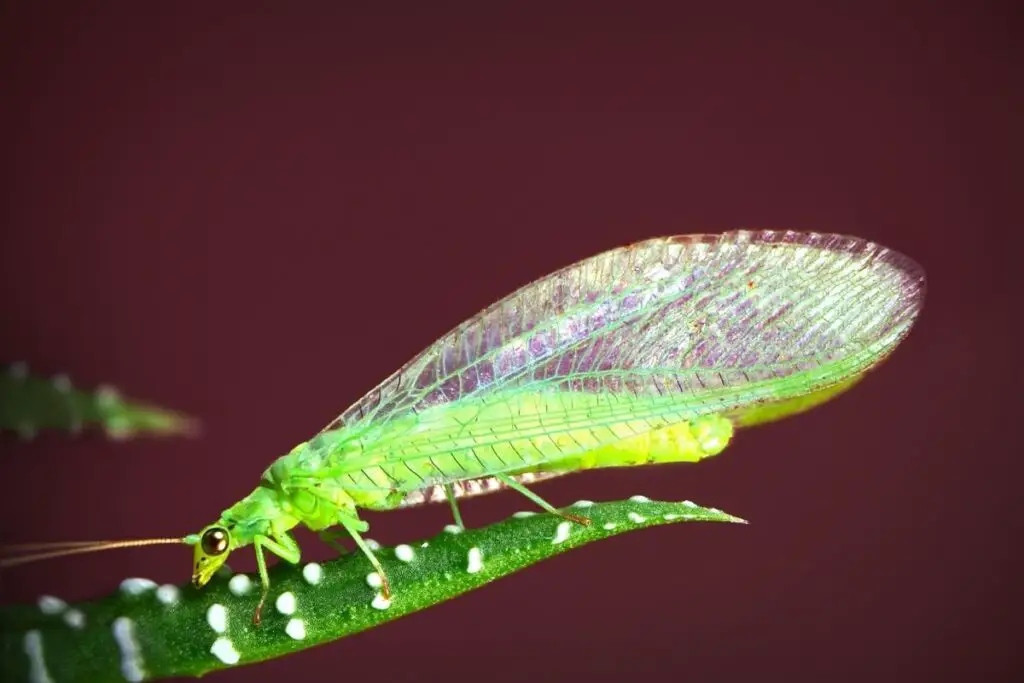
Common pests found in Haworthia
If conditions are favorable for these pests, they will visit your plant and stay there.
Prolonged damp or dry conditions or over-fertilization lead to pest infestation.
The common pests found in these succulents are:
- Mealybugs
- Fungus gnats
- Aloe mites
- Spider mites
- Snout beetles
- Aphids
- Scales
- Rodents (these attack when Haworthias are outdoors)
To know which pests exactly attacked your Haworthias, you must know how they look and what the probable signs of their infestation are.
Mealybugs
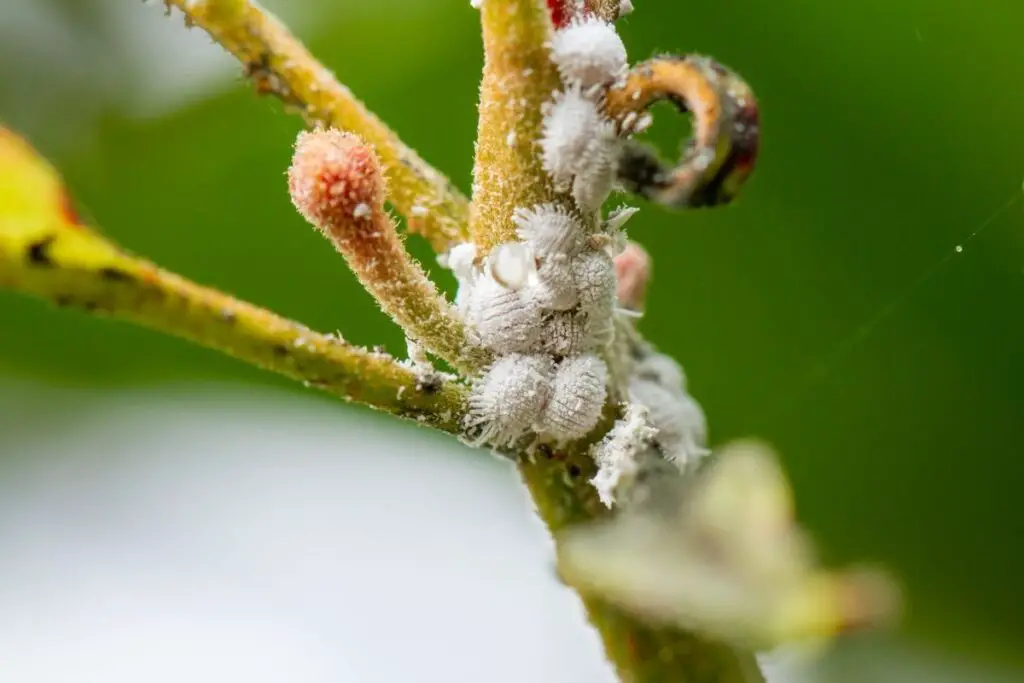
Mealybugs love damp conditions.
Most gardeners commit the mistake of overwatering the succulents, and mealybugs attack those plants the most.
They love to feed on the juices of the plants and make them weak and susceptible to further problems.
After they finish feeding, mealybugs also release a sticky substance in the leaves called honeydew.
Identifying mealybugs:
- White bugs
- They have a white wax coating. It protects the bugs from pesticides.
- They are difficult to point out because of their tiny size.
- They measure only around 2 to 3 mm.
Signs of mealybug infestation:
- Sticky leaves due to honeydew excretion.
- They will have a withered and shriveled look.
- Some portions will have white cottony patches resembling cotton.
- The root mealybugs will leave white spots on the roots and over the soil.
How to get rid of mealybugs?
Use these steps to get rid of the mealybugs.
- Clean the soil where you have found white marks.
- Also, check the roots and remove all the dirt, especially if the soil has whitish flecks.
- If the infestation did not reach the roots, you don’t have to take the plant out.
- Damp a cotton ball and dab it on the infected area. It can weaken their wax coating and also kill them in the process.
- Use insecticidal soaps like Safer Soaps and Castile Soaps.
- Mix some drops of the soap with 2 cups of water, shake well and spray it on the infected area.
- Neem oil is also an excellent organic insecticide. Mix some neem oil with water and liquid soap, shake well and spray it. Do this at night because applying neem oil under sunlight can burn the leaves.
- If the infestation has reached the roots, you need to take the plant out, remove the dirt and soak it in a warm potassium fatty acid solution of 1% for 2 hours. It will kill all the bugs and their eggs. Take the plant out after 2 hours, wash it with warm water, and let it dry in a cool shady area. Plant the succulents back in soil but at a different location.
For preventing mealybugs further, use Imidacloprid.
It is a good systemic pesticide.
Once applied, their toxicity will stay for 1 to 2 years.
The plant will absorb the pesticide and spread it all over its tissues.
Spray it when the temperature is ideal, and they are actively growing.
For applying it, water the plant with the Imidacloprid solution 0.004% approx and drench the soil well.
Fungus gnats
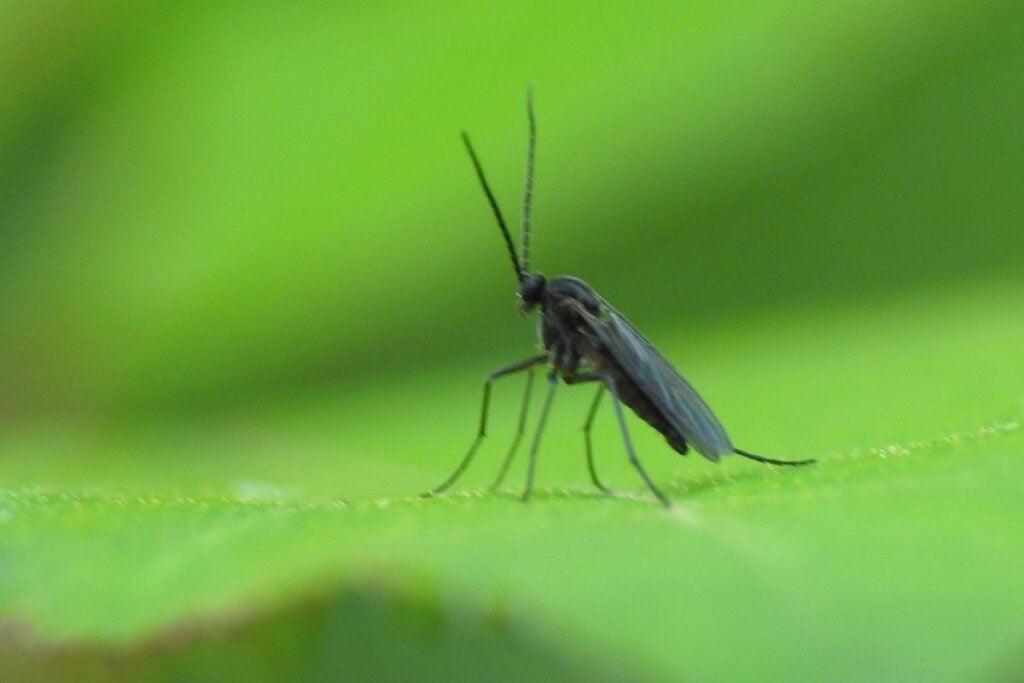
It is not the adult fungus gnats that harm the Haworthias but their larvae.
They feed on the roots of the plant and result in stunted growth.
They attack your Haworthias when some decayed plant tissues or decayed organic materials are present.
Sometimes, the seedlings of Haworthia are placed indoors where they might experience a humid climate.
This kind of environment is quite ideal for Haworthias.
They will visit them, damage the roots and kill the plant.
Identifying fungus gnats:
- The adults are black or brown, resembling mosquitoes.
- The larvae are white and transparent with shining heads.
- Legless bodies of about ¼ inch.
- The larvae look like white worms.
Signs of damage:
- Sudden wilting and yellowing of the leaves despite taking care of their basic needs.
- Loss of leaves
- Both adults and larvae can make the plant vulnerable to diseases.
- With a huge infestation, a great portion of the plant will get destroyed.
How to get rid of fungus gnats and their larvae?
You can remove the gnats with the following steps.
- You can use sticky cards. As they move and fly, they will stick on the cards and fail to come out of them. It is also called trap cards.
- For a small infestation, besides sticky traps, mix 1% hydrogen peroxide solution with water and water the plant with it every time.
- If the infestation is large, you need to take the plant out and soak it in hydrogen peroxide solution.
Take the plant out, clean the roots, remove damaged roots and plant tissues if needed.
Now, emerge the plant is hydrogen peroxide solution 1% for 15 minutes.
This solution will kill all the adults, larvae, and remaining eggs.
After that, wash the plant with clean water, let it dry and plant them at another location free from any infestation.
For quick recovery, avoid all sorts of stress.
To prevent such further attacks, use well-drained soil and avoid using any decomposed material with your soil, like peat.
Wait for the soil to dry out before watering.
Also, remove the dead leaves from the plant before they fall on the ground and start decaying.
Looking for gardening supplies? We have tested 100's of products before recommending them to you guys. Check out our best pick below:
| Image | Gardening Supplies | Best Price? |
|---|---|---|
 Top
Top Top
Top | Raised Garden Bed Kit | Check On Amazon |
 | XLUX Soil Moisture Meter, Plant Water Monitor, Soil Hygrometer Sensor for Gardening, Farming, Indoor and Outdoor Plants, No Batteries Required | No Results |
 Top
Top Top
Top | 82 Pcs Garden Tools Set and Extra Succulent Tools Set | Check On Amazon |
 | Joeys Garden Expandable Garden Hose with 8 Function Hose Nozzle, Lightweight Anti-Kink Flexible Garden Hoses, Extra Strength Fabric with Double Latex Core, (50 FT, Black) | No Results |
 Top
Top Top
Top | Dual Chamber Compost Tumbler | Check On Amazon |
 Top
Top Top
Top | Sunnyglade Plant Stakes | Check On Amazon |
 Top
Top Top
Top | Organic Cold Pressed Neem Seed Oil | Check On Amazon |
 Top
Top Top
Top | Mighty Mint Gallon :-Insect and Pest Control Peppermint Oil | Check On Amazon |
 Top
Top Top
Top | Scotts DiseaseEx Lawn Fungicide | Check On Amazon |
 Top
Top Top
Top | Jacks Classic 20-20-20 All Purpose Fertilizer | Check On Amazon |
 Top
Top Top
Top | 30,000 Seeds Pollinator Attracting Wildflower Mixture | Check On Amazon |
 Top
Top Top
Top | Survival Vegetable Seeds Garden Kit-Over 16,000 Seeds | Check On Amazon |
Aloe mites
These mites are seen mostly in Aloe plants.
But nowadays, they attack Haworthias too.
Many Haworthias varieties resemble an Aloe plant and get attacked by these mites.
Varieties like Splendens, Bayer, Picta, Retusa, Springbokvlakensis, and a few others might get attacked by these bugs.
Aloe mites are quite tough to discover and treat.
They can develop a cancerous growth in your succulent.
Identifying aloe mites:
- Worm-like appearance with two pairs of legs.
- Very poor crawlers.
- Identification is next to impossible unless and until the plant displays the infestation signs.
Signs of damage:
- Gall growth in the plant.
- Abnormal growth of the plant tissues at the growth center.
- Bubble fringe on the leaf edges
- An odd orange and green growth at the joining of the leaf and stem.
How to remove aloe mites?
The moment you spot the problem, isolate the plant immediately as the pests can spread easily.
There are no such treatments for aloe mite infestation as it is cancerous.
The best way to save other plants is to discard the infected plant.
However, if the infestation has just started, you might not need to discard the whole plant.
Just remove the infected parts.
Remove the gall formation as quickly as possible.
If the leaves are healthy, get more Haworthias by propagating leaf cuttings.
Spray some pesticides to prevent further suffering.
Spider mites
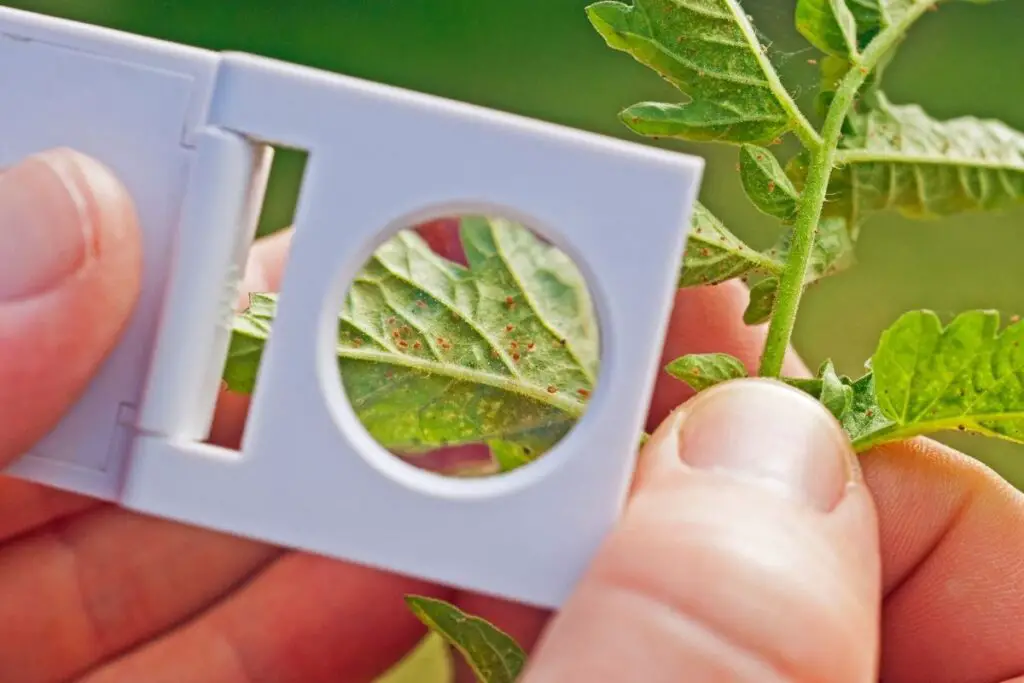
Like the mealybugs, the spider mites will also feed on the sap.
They are so tiny that it is quite difficult to notice them.
They will only get visible when the damage is done.
Identifying the mites:
- Spider mites are found on the underside of the leaves.
- Red moving marks will be seen all over the plant.
- They measure less than 1 mm. That is why they are difficult to detect.
- Their eggs are transparent and small.
Symptoms of damage:
- Discolored leaves.
- White and silvery spots all over the leaves
- The leaves will have webbings on the tips, edges, and stem for the mites’ easy movement.
How to get rid of spider mites?
Here’s how you get rid of the pesky spider mites:
- Isolate the plant to prevent the infection from spreading.
- Spray neem oil on the infested areas.
- Dab cotton dipped in rubbing alcohol on the infested area. This will kill them.
- Use insecticidal soaps.
- Spider mites enjoy hot, dry conditions and hate wet weather. You can get rid of them by watering them.
- Spray some miticides if the infested is a little huge. Spray it frequently. Don’t expose them to direct sunlight for some weeks while treating them with miticides.
- Continue to check the plant every 3 weeks after recovery to ensure they are not back again.
Aphids
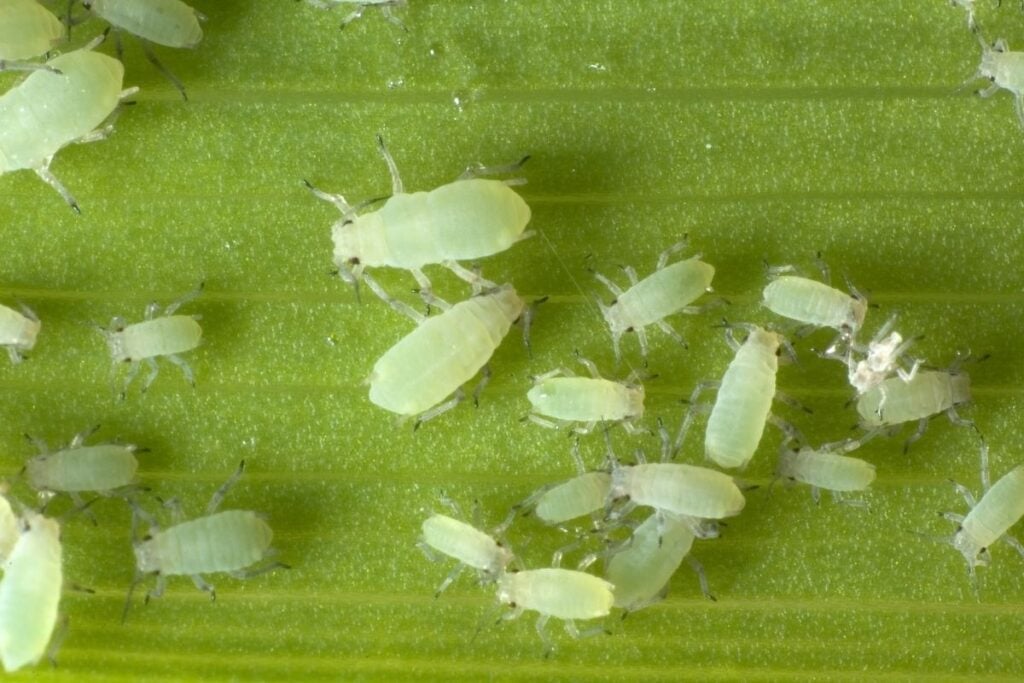
Like mealybugs and spider mites, aphids also feed on the sap.
They, too, secrete honeydew after feeding on the sap.
This sticky substance further encourages the formation of sooty mold.
Identify aphids:
- They look mostly transparent green but are available in many colors.
- You can find them under the leaves.
- They have fat, teardrop-shaped body.
Symptoms of attack:
- Sticky leaves due to excretion of honeydew.
- Yellow and distorted leaves.
- The leaves will look as if someone spread sawdust over them.
- Shriveled leaves and stunted growth
How to get rid of aphids?
Remove aphids from your Haworthias by:
- Firstly, isolate the plant. Always quarantine them when they suffer any infestations to prevent spreading.
- Mix a few drops of liquid soap with 1-2 cups of water and spray it on the infested areas.
- You can release ladybugs in the garden. They will feed on the aphids and completely free your plant from them.
- Spray neem oil. Mix 1-2 tablespoons of the oil with 8 cups of water and spray it to the plant, concentrating more on the attacked zone. Continue once a week until resolved.
- Don’t expose your plant to the direct sun while using neem oil. Do it at night.
Scales
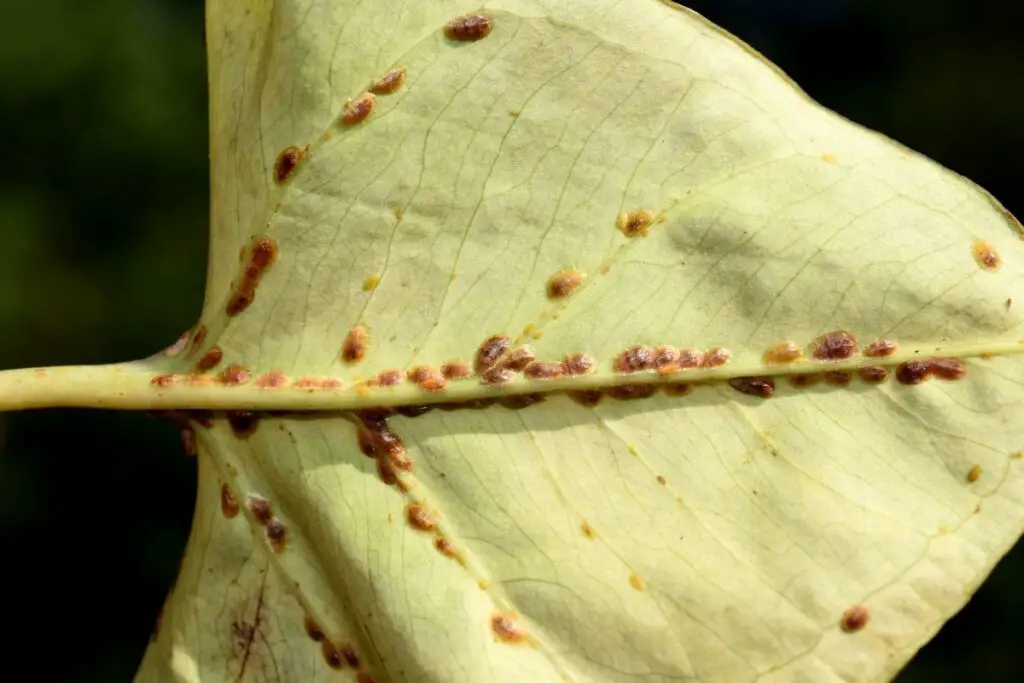
These pests are a nuisance. There are many species of scales.
Two types of scales are available: hard-shelled and soft-shelled.
They will also suck the plant saps and make the plant prone to diseases.
Identifying scales:
- They look flat and have a waxy, brown body.
- They are ¼ inch in length.
- The mature scales don’t change their location once they settle at one particular place.
Symptoms:
- Brown bumps on the leaves
- They pierce to suck the saps. There will be piercing signs.
- The soft-shelled scales produce honeydew and make the leaves sticky.
- The leaves will get discolored.
How to remove scales?
You can remove a small number of brown bumps with nails or tweezers.
When the hard-shelled scales infest the plant, remove certain portions where you find them.
Dabbing cotton balls damped with alcohol can weaken their shells and kill them.
Insecticidal soaps will also weaken the shells.
Mix some drops of soap with 2 cups of water and spray directly on the affected area.
If the soft-bodied scales have infested, release ladybugs.
You have to take the plant out for a huge infestation, clean the roots, spray soap water or rubbing alcohol (½ the strength), and plant them in some good, uninfested area.
Before planting, let the plant dry out.
Keep it isolated until the problem gets resolved.
The old location, where the infestation occurred, must be sprayed with alcohol to remove the pests.
Snout beetles
These pests attack mostly aloe plants.
Since the Haworthias look like aloe plants, snout beetles will also infect them.
They pierce the leaves with their snout and feed on the saps.
Identification:
- They measure about ¾ inches.
- Targets the center of the plant
- The eggs are found at the base of the leaves.
Symptoms:
- The leaves will have a dark spot which changes to a dry spot. It is the pierce mark.
- The stems will rot as their larvae enter the stem and stay there for the rest of their lifecycle.
- Distorted leaves as they chew and pierce the leaves.
How to treat snout beetles?
Treating the larvae that got inside the stems is challenging enough.
For the mature beetles, you can remove them by handpicking them.
Spraying insecticides will work if they have not stayed there for too long.
If your plant is big and has a severe infestation, start cutting the stalk right above the infestation.
Dip the stalk in the rooting hormone, let it dry for some time, and check whether they will develop roots.
Use systemic insecticides for further prevention.
Snails
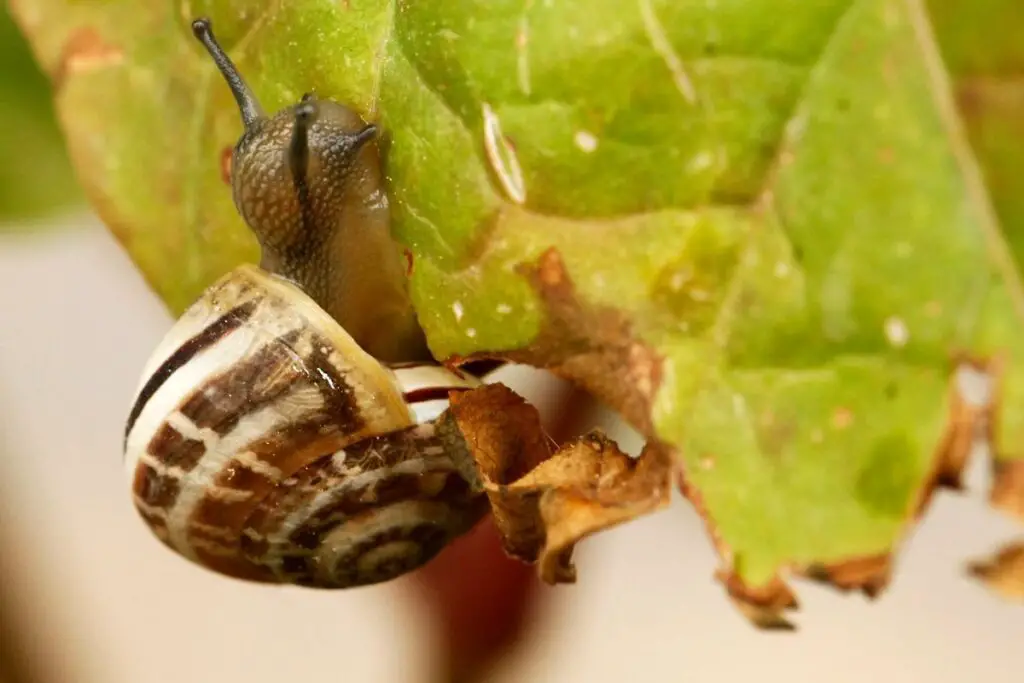
Snails can be very destructive if they arrive in large colonies.
They love to feed on the soft new growth in the plant and even the tissues in large masses.
They attack particularly at night and hide under the soil during the day.
Identification:
- They look like worms and hold shells over their body.
- They measure around 5 cm
- They will be moving very slowly.
- Their color is light to dark olive green or brown.
- Snail damage
- Holes in the leaves.
- Silvery slime trails on the leaves
How to get rid of snails?
You can remove them with your hand whenever you spot them.
You can set traps.
Take a can, fill it with beer and bury it where you suspect their stay.
The top ½ to 1 inch must be outside the soil.
The snails will get attracted by the smell of beer, come out, fall, and drown.
Empty the can every morning and keep it back the same way.
They will attack more if the plant stays moist and humid for a long time.
Avoid prolonged dampness.
Rodents and lizards
Rodents like rats, mice, rabbits, etc., and lizards will feed on your plant when hungry.
They will feed on your plant, chew them, enjoy them and destroy your whole garden.
It will ultimately lead to the death of your plant.
Symptoms:
- Plant detached from the soil and stayed over the soil idly.
- Bitten leaves all over the plant and pieces over the garden.
- Diagonal biting marks indicate rabbits.
How to get rid of rodents and lizards?
There are different ways of keeping rodents and lizards away from your Haworthias.
- Create a fence around the garden.
- Leave chicken grits around the garden bed.
- Use Plantskydd. It works for all animal pests.
- Use methyl nonyl ketone crystals and mothballs to deter them.
- Add some companion plants around the garden as a border, for example, Sage, Lavender, Marigold, etc. These give out a strong smell that is intolerable for these pests.
- Sprinkle some peppermint or cayenne powder around the garden bed.
Final thoughts
Though Haworthias don’t usually get pests, you must still check the plant for signs of pest attack. Indoors, there are fewer chances unless and until you do something wrong.
Outdoors there are higher chances. So check the plant daily. Check both sides of the leaves and the stems as these areas are ideal for their stay.
If your plant gets an infestation, take immediate steps to stop them from the beginning so that it doesn’t spread much. Follow the steps of revival as explained. Your plant will come back healthy.
Let them have bright indirect sunlight, provide water when the soil is dry, use well-drained soil, and don’t expose them to cold temperatures or high humidity. These are some basic needs Haworthias require. Take care of these, and your Haworthia will stay healthy for a long time.
Reference: The Haworthia Society, Botanical Studies, University of Wisconsin-Madison, Sciencedirect, Researchgate, Haworthia Study.
